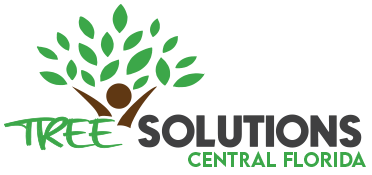🌳 Shade & Hardwood Trees #
- Live Oak, Laurel Oak, Water Oak: every 3–5 years (sooner if close to the house). Oaks drop heavy limbs in storms if not maintained.
- Maple (Red, Florida Maple): every 3–5 years.
- Southern Magnolia: every 3–4 years, light structural pruning as needed.
- Elm (Winged, American, Drake): every 3–4 years — elms can grow quickly and need thinning.
🌴 Palms (very common in Florida yards) #
- Sabal (Cabbage Palm), Queen Palm, Sylvester Palm, Date Palm, Royal Palm: once a year, removing only dead/brown fronds and seed pods.
⚠️ Don’t “hurricane cut” (removing all but the top fronds) — it weakens the palm.
🍊 Fruit & Flowering Trees #
- Citrus (orange, grapefruit, lemon, lime): once a year after fruiting.
- Crepe Myrtle: every year or two, light shaping only — don’t “top” them.
- Loquat, Avocado, Mango: annually, after harvest.
🌲 Pines #
- Slash Pine, Sand Pine, Longleaf Pine: rarely need trimming except to remove dead/dangerous limbs.
✅ Rule of Thumb:
- Young trees → more frequent trimming (every 2–3 years) for shaping.
- Mature shade trees → every 3–5 years.
- Palms & fruit trees → yearly.
Here’s a Central Florida tree trimming checklist for spotting urgent needs: #
1. Dead, Diseased, or Dying Branches #
- Branches with no leaves in the growing season.
- Blackened, cracked, or fungus-covered areas.
- Weak or hollow branches that could break in a storm.
Why: Dead or diseased branches can fall and damage property or spread disease to healthy parts of the tree.
2. Crossing or Rubbing Branches #
- Branches that rub against each other or against structures.
Why: Rubbing creates wounds where disease and pests can enter.
3. Branches Near Structures #
- Branches hanging over roofs, fences, cars, or power lines.
Why: Storms or strong winds can snap these branches and cause damage.
⚠️ If near power lines, hire Tree Solutions Central Florida, LLC
4. Imbalanced or Heavy Canopy #
- One side of the tree is heavier than the other.
- Branches grow downward or in strange angles.
Why: Imbalanced trees are more likely to tip or break in storms.
5. Signs of Pest or Disease #
- Sawdust, holes in bark, oozing sap, or leaf discoloration.
- Fungal growth at the base or on branches.
Why: Early pruning can help stop the spread of pests or disease.
6. Young Trees – Shaping Needs #
- Multiple competing trunks (“codominant stems”).
- Branches growing inward toward the trunk.
Why: Proper early pruning prevents weak branch structure in the future.
Extra Tips for Central Florida #
- Trim before hurricane season (May–June) to reduce storm damage.
- Avoid heavy pruning of palms except removing brown fronds — overcutting weakens them.
- Always use a certified arborist for large oaks or branches near structures to prevent injury or fines.




